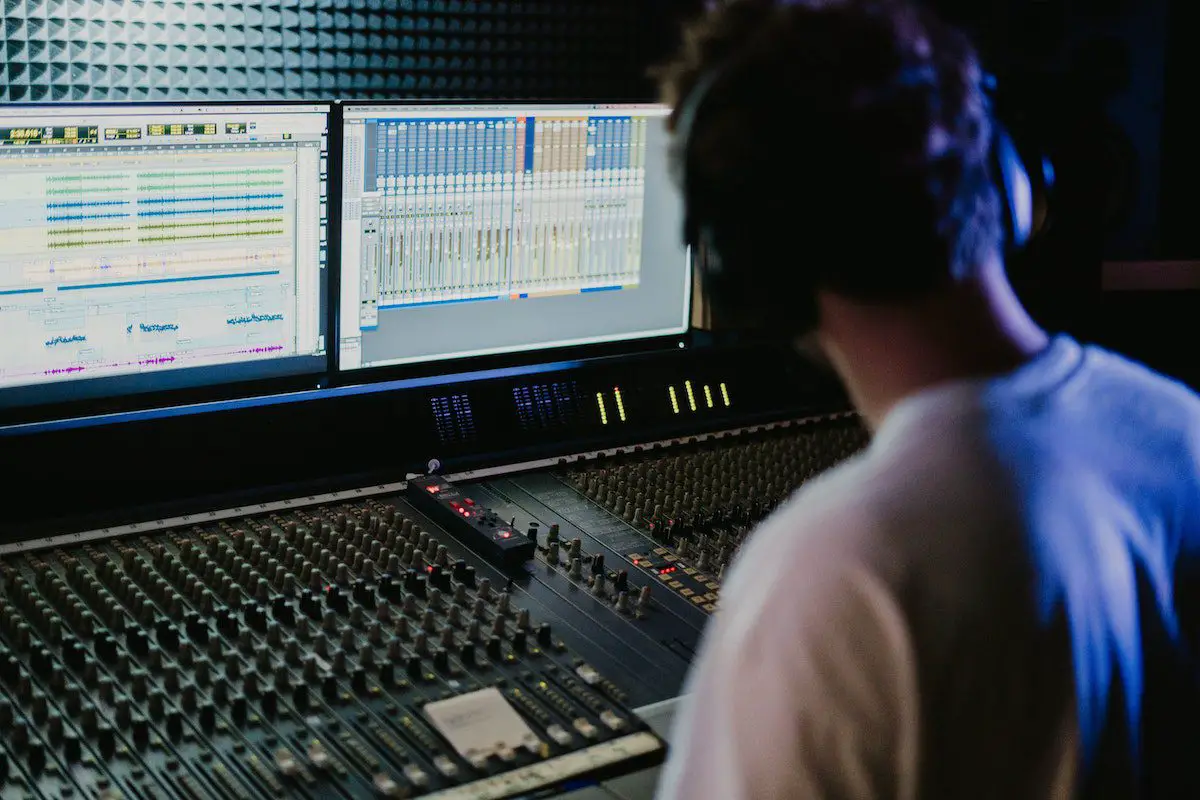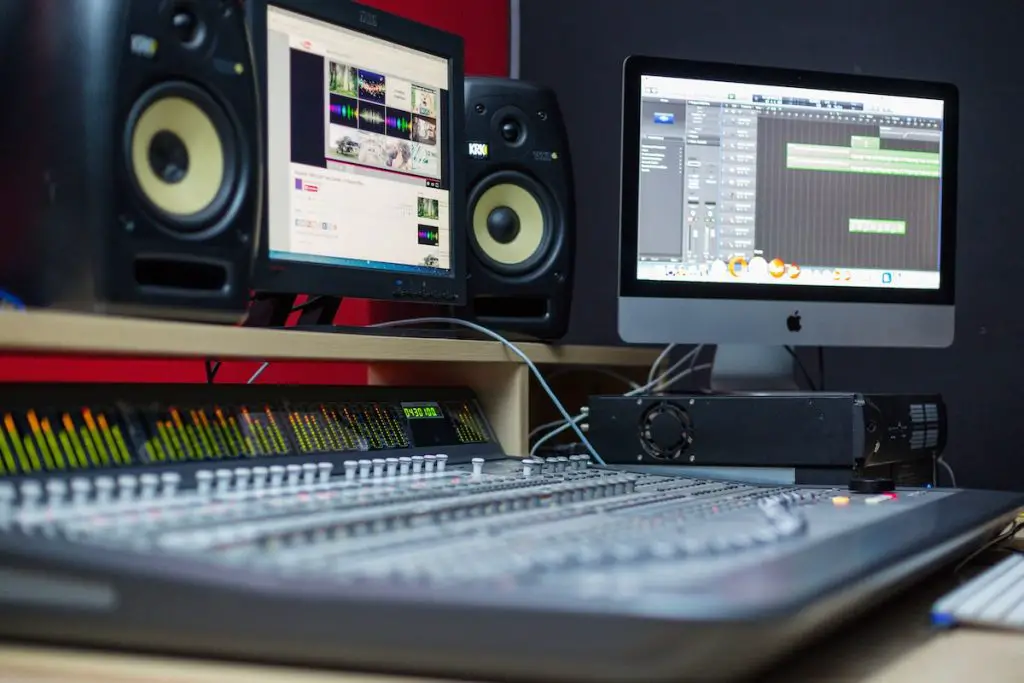Get ready to turn it up to eleven! Audio effects are the secret sauce that can take your music production game from garage band to headlining act. From reverb to distortion, these tools are essential for creating that larger-than-life sound. But, as with any great power, it’s essential to wield audio effects wisely.
In this beginner’s guide, we’ll explore audio effects, dive into the most common types, and discover how they can improve sound quality. We’ll also introduce you to the tools and software needed to apply these mystical transformations to your audio tracks. So, let’s get ready to rock… or jazz, hip-hop, or whatever genre tickles your eardrums!
What are audio effects? Audio effects are tools or processes that manipulate and alter sound signals to create a desired outcome, such as enhancing a specific tone or adding depth to a recording. They play a crucial role in shaping the overall sound of music, podcasts, and other audio productions.
What are audio effects?

AKAI Professional MPK Mini MK3

AKAI Professional MPK Mini MK3
What are the common audio effects?
Common audio effects can be categorized based on how they manipulate sound. Here are some typical categories and their associated effects:
1. Modulation effects
These effects manipulate the audio signal’s frequency or amplitude to create various textures and sounds.
- Chorus: Creates the impression of multiple voices or instruments playing simultaneously with a larger delay.
- Tremolo: Modulates the amplitude or volume of the audio signal, creating a pulsating effect.
- Flanger: Achieved by mixing the original audio with a slightly delayed copy, resulting in a sweeping, swirling sound.
- Phaser: Combines the original audio with a phase-shifted version, resulting in a sweeping, spacey effect.
2. Time-based effects
These effects manipulate the audio signal over time, adding depth and space.
- Reverb: Simulates the sound reflections in an acoustic environment, adding a sense of space and depth to the audio.
- Delay: Creates a series of echoes or repetitions of the original audio signal, spaced at specific intervals.
- Echo: Similar to delay, it repeats the audio signal at regular intervals but with a more pronounced effect and longer intervals between repetitions.
3. Spectral effects
These effects manipulate the audio signal’s frequency content or distribution.
- EQ (Equalization): Adjusts the balance of various frequency components in the audio signal, allowing the enhancement or reduction of specific frequencies.
- Panning: Controls the spatial distribution of the audio signal within the stereo or surround sound field, creating a sense of direction and space
4. Dynamic effects
These effects control the audio signal’s amplitude or loudness.
- Compression: Reduces the audio signal’s dynamic range by attenuating louder parts and amplifying quieter parts, resulting in a more balanced and consistent sound.
- Distortion: Alters the audio signal by adding harmonic content, resulting in a warm, gritty, or aggressive sound.
These common audio effects are used in various combinations to shape and enhance the sound in music production, sound design, and live performances.

How to add effects to your audio
To add effects to your audio, you can use various audio editing software and follow these general steps:
1. Choose an audio editing software
There are several tools available for editing audio and adding effects. Some popular options include Audacity, AudioToolset, Kapwing, and Adobe Audition.
2. Import the audio file
Open the audio editing software and import the audio file you want to add effects to. This process may vary depending on the software you use.
3. Select the desired effect
Browse through the available audio effects in the software. Common effects include modulation effects (chorus, tremolo, flanger, phaser), time-based effects (reverb, delay, echo), spectral effects (EQ, panning), and dynamic effects (compression, distortion).
4. Apply the effect
Once you’ve chosen the effect, apply it to the desired section of the audio track or the entire track. This process will also vary depending on the software you use. In some programs, you may need to enable recording and monitoring input to hear the effects in real time.
5. Adjust the effect parameters
Most audio effects come with adjustable parameters that allow you to fine-tune the effect to your liking. Experiment with these parameters to achieve the desired sound.
6. Preview the audio
Listen to the audio with the applied effect to ensure it sounds as intended. Make any necessary adjustments to the effect parameters or try a different effect if needed.
7. Save and export the audio
Once you’re satisfied with the added effects, save your project and export the edited audio file in the desired format.
Remember that the specific steps for adding effects to your audio may vary depending on the audio editing software you choose. Always refer to the software’s documentation or help section for detailed instructions on using its features and effects.
Advantages and disadvantages of using audio effects
Audio effects are powerful tools that can enhance the quality and impact of audio recordings, whether it’s music, podcasts, or other audio projects. They offer a range of creative possibilities, but it’s important to consider their advantages and disadvantages before using them.
Advantages
Using audio effects can provide several benefits in the production and enjoyment of audio content:
- Enhanced creativity: Audio effects allow for experimentation and creative expression, enabling artists and sound engineers to craft unique and engaging audio experiences.
- Improved audio quality: Certain effects, such as equalization and compression, can enhance the overall clarity, balance, and dynamics of audio recordings, resulting in a more professional sound.
- Sound shaping: Effects like reverb, delay, and modulation can shape the spatial and temporal characteristics of sound, adding depth, spaciousness, and movement to the audio, creating a more immersive experience.
- Emotional impact: Audio effects can evoke specific emotions or moods. For example, using a specific reverb can create a sense of intimacy or spaciousness, enhancing the emotional impact of the content.
- Correction and restoration: Effects like noise reduction, de-essing, and pitch correction can help fix or minimize unwanted audio artifacts, improving the overall quality and intelligibility of the recording.
…excessive or improper use of effects can obscure the original audio, making it harder for listeners to understand or enjoy the content.
Disadvantages
While audio effects offer numerous advantages, it’s important to be aware of their potential drawbacks:
- Overuse or misuse: Using too many effects or applying them incorrectly can result in a cluttered or artificial sound, detracting from the natural quality of the audio.
- Decreased clarity: In some cases, excessive or improper use of effects can obscure the original audio, making it harder for listeners to understand or enjoy the content.
- Compatibility issues: Certain audio effects may not be supported by all playback devices or software, limiting the accessibility of the audio content.
- Increased complexity: Working with audio effects requires knowledge and expertise, and their improper use can lead to time-consuming troubleshooting or unsatisfactory results.
- Potential for distraction: While effects can enhance the listening experience, they may also distract or detract from the intended message or focus of the audio content if not used judiciously.
Remember, the key to effectively using audio effects is finding the right balance and applying them purposefully to enhance the content without overwhelming it. By understanding their advantages and disadvantages, you can make informed decisions to create compelling audio experiences.
Conclusion
Well, there you have it, folks! You’re now armed with the knowledge to turn your tracks into sonic masterpieces. Whether you’re a music producer, podcaster, or someone who loves a good tune, understanding audio effects is essential. Did I cover everything you wanted to know? Let me know in the comments section below. I read and reply to every comment.
So, go forth and experiment! Remember, the key to using audio effects is subtlety and balance. Don’t be tempted to go overboard and turn everything up to 11. And if you found this article helpful, share it with a friend, and check out my full blog for more tips and tricks on all things audio. Thanks for reading, and may your tracks be forever groovy.
Key takeaways
This article covered effects in audio. Here are some key takeaways:
- Audio effects are tools or processes that manipulate and alter sound signals to achieve a desired outcome.
- Common types of audio effects include reverb, delay, equalization, compression, distortion, and modulation.
- Audio effects can improve sound quality by enhancing instrument tones, balancing frequencies, and creating depth and space.
- Digital audio workstations (DAWs), audio plugins, and hardware processors are used to apply audio effects to recordings.
- To effectively use audio effects, beginners should understand the effect parameters, practice subtlety and balance in usage, and experiment with effect combinations.















